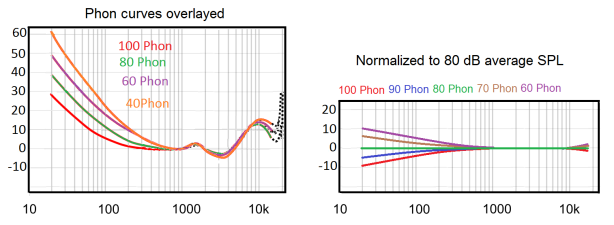dshreter
Addicted to Fun and Learning
- Joined
- Dec 31, 2019
- Messages
- 814
- Likes
- 1,277
“The Fletcher Munson Curve contains a set of graphs that show that when you listen to music at a lower volume, mid-range frequencies will be sound more prominent, whereas high and low frequencies will be somewhat suppressed.
However, when the volume is increased, the reverse happens – high and low frequencies become more pronounced while the mid-range frequencies fade into the background.
In other words, the Fletcher Munson Curve demonstrates the average sensitivity of a human ear to audio signals of different frequencies at varying sound levels.”
I have a few questions about what this implies in practice.
Should you compensate for this in your own listening? I’m aware in psychoacoustics the brain naturally compensates for many things, so does fully adjusting for equal loudness compensation at low levels sound wrong or is it more similar to the intended mix? And in reference to music, what level is considered reference that you would compensate in relation to?
Given I tend to listen to music at lower volumes I am a bit lost on what to use as a target response curve for EQing my speakers. I could just do what sounds “best” but a little extra bass always sounds good for a little while so I don’t exactly trust my ears to get it right.

